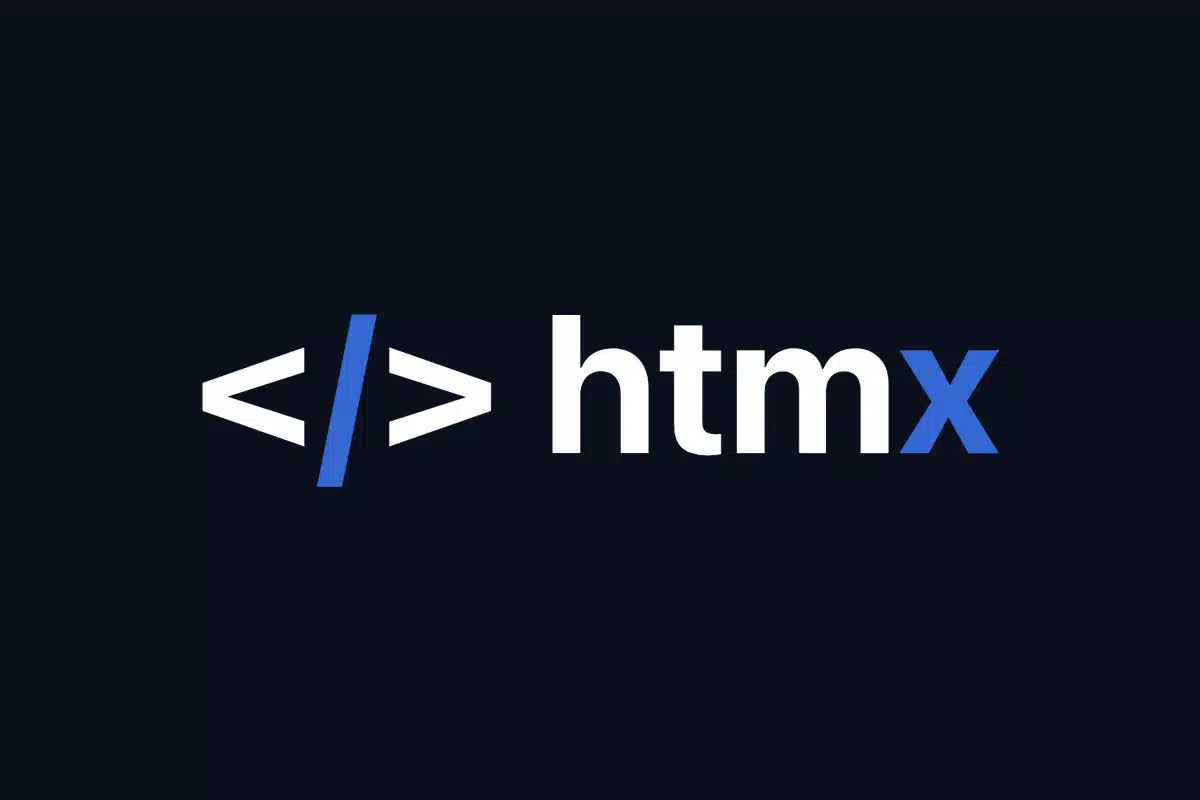An In-Depth Guide to HTMX: Building Dynamic Web Applications with Minimal JavaScript

MontaF - Sept. 12, 2024

HTMX is a modern web development library that allows developers to create dynamic, interactive, and reactive web applications without writing large amounts of JavaScript. Instead, HTMX enables HTML to trigger various types of interactions—such as making requests to the server and swapping HTML fragments—using simple HTML attributes.
This article provides a comprehensive overview of HTMX, its features, how it works, and why you should consider using it in your projects.
1. Introduction to HTMX
HTMX is designed around the concept of extending the functionality of HTML. By using HTML attributes, it enables interaction between the frontend and the backend without relying heavily on JavaScript or frontend frameworks like React or Vue. This makes HTMX perfect for scenarios where you want to retain the simplicity of server-side rendering while still offering dynamic functionality.
With HTMX, you can:
- Make asynchronous requests to the server (AJAX-style).
- Perform partial page updates without reloading the entire page.
- Interact with other components on the page without writing JavaScript.
Key features of HTMX:
- HTML-Driven Development: HTMX allows you to use HTML attributes to control dynamic behavior, reducing the need for custom JavaScript.
- Partial Page Reloading: Instead of rendering entire pages, HTMX allows you to update just a portion of the page.
- AJAX Simplified: Makes it easy to send and receive server requests without writing complex JavaScript.
- Progressive Enhancement: Can be added incrementally to enhance specific parts of an application.
2. How HTMX Works
HTMX allows HTML elements to make requests (like AJAX requests) and update parts of the web page in response.
This is done by adding attributes directly to your HTML tags, such as hx-get, hx-post, hx-swap, and hx-trigger.
Core Concepts and Attributes
1.hx-get
Description: Sends a GET request when the specified element is triggered.
Example:
<button hx-get="/endpoint" hx-target="#result">Load Data</button>
<div id="result"></div>
How it works: When the button is clicked, HTMX sends a GET request to /endpoint. The result of that request is inserted into the #result div.
2.hx-post
Description: Sends a POST request to the server with the form or element data.
Example:
<form hx-post="/submit" hx-target="#message">
<input type="text" name="username">
<button type="submit">Submit</button>
</form>
<div id="message"></div>
How it works: When the form is submitted, HTMX sends a POST request to /submit with the form data, and the response is placed in the #message div.
3.hx-swap
Description: Controls how content is swapped in after an HTMX request. This can be used for replacing, appending, or prepending content.
Example:
<button hx-get="/more" hx-swap="beforeend">Load More</button>
<div id="content"></div>
Swap Options:
outerHTML: Replace the entire element.innerHTML: Replace the contents.beforebegin: Insert content before the element.afterbegin: Insert content inside the element, before its first child.beforeend: Insert content inside the element, after its last child.afterend: Insert content after the element.
4.hx-target
Description: Specifies which element should be updated with the result of the request.
Example:
<button hx-get="/data" hx-target="#output">Fetch Data</button>
<div id="output"></div>
5.hx-trigger
Description: Specifies when the request is triggered (e.g., on click, on hover, when the page is loaded).
Example:
<input hx-post="/update" hx-trigger="change" hx-target="#status">
<div id="status"></div>
3. Installing and Using HTMX
Installation
HTMX is very simple to install. You can either include it via a CDN or install it using npm for more controlled environments.
Using CDN: Add the following script tag to your HTML:
<script src="https://unpkg.com/htmx.org@1.9.2"></script>
Using npm:
npm install htmx.org
Basic Example
Let’s say you have a web page where you want to load content dynamically based on user interaction.
Without HTMX, you’d likely write some JavaScript to handle fetching data and updating the DOM.
However, with HTMX, this can be done directly within HTML:
<!DOCTYPE html>
<html lang="en">
<head>
<meta charset="UTF-8">
<meta name="viewport" content="width=device-width, initial-scale=1.0">
<script src="https://unpkg.com/htmx.org@1.9.2"></script>
<title>HTMX Example</title>
</head>
<body>
<h1>Welcome to HTMX</h1>
<button hx-get="/getData" hx-target="#result">Load Data</button>
<div id="result"></div>
</body>
</html>
In this example, when the button is clicked, HTMX sends a GET request to the /getData endpoint and places the returned data inside the #result div.
4. Advanced HTMX Features
4.1 Handling Events
HTMX provides a number of events that can be used to hook into the request lifecycle, such as htmx:beforeRequest, htmx:afterRequest, and htmx:load.
Example of handling events:
<div id="output"></div>
<button hx-get="/getData" hx-target="#output" id="load-btn">Load Data</button>
<script>
document.getElementById('load-btn').addEventListener('htmx:beforeRequest', function(event) {
console.log('Before the request');
});
document.getElementById('load-btn').addEventListener('htmx:afterRequest', function(event) {
console.log('After the request');
});
</script>
4.2 WebSockets with HTMX
HTMX can also work with WebSockets for real-time communication.
Example of WebSocket usage:
<div hx-ws="connect:/ws-endpoint" hx-swap="innerHTML">
Connecting to WebSocket...
</div>
Here, HTMX connects to a WebSocket at /ws-endpoint and updates the content of the div based on data sent from the server.
4.3 Polling
HTMX supports polling, which allows you to refresh content at regular intervals.
Example of polling:
<div hx-get="/currentTime" hx-trigger="every 10s" hx-swap="innerHTML">
Loading time...
</div>
This will automatically send a GET request to /currentTime every 10 seconds, updating the div’s content with the server’s response.
4.4 Using hx-boost
HTMX provides an easy way to make links and forms AJAX-enabled without writing custom JavaScript by using hx-boost.
Example:
<a href="/nextPage" hx-boost="true">Go to next page</a>
When hx-boost is set to true, HTMX intercepts the default link behavior and fetches the page content dynamically without reloading the page.
5. Why Use HTMX?
5.1 Simplicity and Productivity
HTMX allows developers to build dynamic websites without the complexity of writing extensive JavaScript or using heavy frontend frameworks. By focusing on declarative HTML attributes, HTMX reduces the cognitive load, letting you focus on the actual functionality rather than managing the frontend state.
5.2 Progressive Enhancement
Since HTMX relies on basic HTML attributes, it gracefully degrades in environments where JavaScript is disabled. This makes it a great choice for projects focused on accessibility and browser compatibility.
5.3 SEO and Server-Side Rendering
HTMX preserves server-side rendering, allowing content to be search engine-friendly. Unlike JavaScript-heavy SPA frameworks, HTMX is perfect for applications that need fast load times, SEO benefits, and full control over the rendered HTML on the server.
6. Integrating HTMX with Backend Frameworks
HTMX can be seamlessly integrated with most backend frameworks, including Django, Flask, Ruby on Rails, and Express.
Since HTMX operates over standard HTTP methods (GET, POST, PUT, DELETE), it easily fits into the existing server architecture.
Django Example
# views.py
from django.http import JsonResponse
from django.shortcuts import render
def index(request):
return render(request, 'index.html')
def get_data(request):
if request.is_ajax():
return JsonResponse({'message': 'Data Loaded Successfully!'})
<!-- index.html -->
<button hx-get="{% url 'get_data' %}" hx-target="#result">Fetch Data</button>
<div id="result"></div>
In this Django example, HTMX sends an AJAX request to the get_data view, and the response is displayed in the #result div.
Conclusion
HTMX is a powerful and lightweight library that simplifies building dynamic web applications.
By leveraging standard HTML and HTTP requests, HTMX bridges the gap between traditional server-side rendering and modern, dynamic user interfaces.
Its ease of integration, simplicity, and progressive enhancement capabilities make it a great tool for building modern web applications without sacrificing the advantages of server-side frameworks.
Whether you're looking to incrementally enhance an existing project or start fresh with minimal frontend complexity, HTMX is a tool worth exploring.
It brings back the simplicity of the web while still delivering a responsive and interactive user experience.


